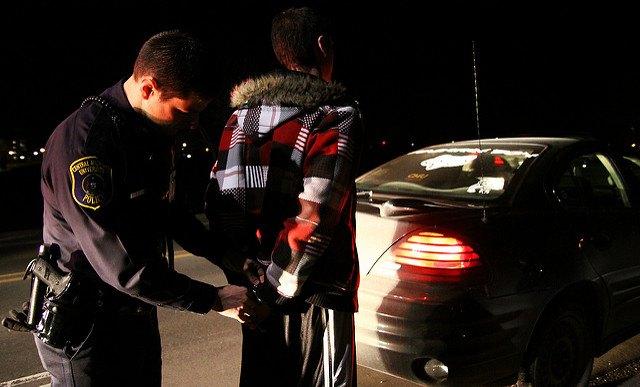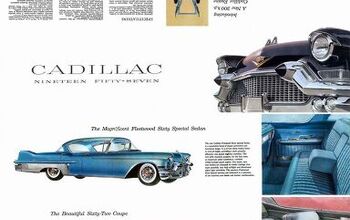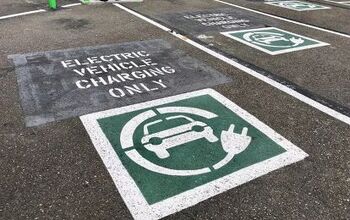Looming Legal Weed Sparks Roadside Worries in Canada

Canada’s oh-so-green federal government sure isn’t concerned about one form of air pollution — clouds of marijuana smoke. With the country’s cities already infused with the tell-tale odor of wacky tobaccy, legislation has been tabled to make possession of the drug legal, perhaps by as early as July 2018.
Great news for grass aficionados, but a troubling turn of events for road safety advocates. The jury’s out on whether Canada’s law would spark an uptick in drugged driving, but the proposed methods of testing — and convicting — weedy drivers has raised other concerns. One group has a problem with the Great Green North’s strategy to root out baked motorists.
It would seem the Canadian government is entering the wild and woolly world of weed with a reasonable degree of caution.
On the same day as the legalization legislation, the government tabled another bill targeting impaired drivers. The new measures will “better deter and detect drug-impaired driving,” the government claims, and would see motorists hand over two types of bodily fluids for testing during a roadside stop. Like booze, the bill would set legal limits to the amount of THC in a driver’s bloodstream.
While police officers will still be able to use their judgement to detect impairment — and provide opinion evidence in court — the motorist’s blood and saliva will likely seal their legal fate. In some U.S. jurisdictions, plenty of doubt has attached itself to the results of saliva swab tests. A blood test is meant to overcome the inaccuracies present in the first test.
According to the Canadian proposal, “Qualified technicians would be able to take blood samples from a driver without a doctor’s oversight, allowing for testing sooner after a person is pulled over.” This is supposed to increase the accuracy of the test and free up scarce healthcare personnel. However, the Canadian Automobile Association (CAA) has voiced its worry over the testing.
The new law “would require a positive blood test within two hours in order to get a conviction,” the association stated in a recent release. “Evidence from U.S. jurisdictions is that it often takes longer than two hours to complete the process, and also requires the presence of a trained technician to take the sample, putting a tough burden on law enforcement and raising questions about how workable the provision will be.”
After several states legalized marijuana, a study showed levels of bloodstream THC didn’t correspond with a driver’s level of impairment. Because of this, the American Automotive Association has advocated for observation-based impairment detection, where trained officers analyze a number of physiological and behavioral indicators.
It sounds like Canuck cops might be given that say, though it’s doubtful that a driver with blood-tested THC levels above the legal maximum would get a pass, regardless of how sharp they were while standing on the roadside. Another concern is the training promised for police forces.
“While the government committed today to making more money available to train police in drug recognition and to acquire testing devices, it didn’t say how much or when it will be available,” CAA stated. It has the same concern about the limited money promised for public information campaigns.
Don’t expect the so-called “Prince of Pot” Marc Emery to make the job of the government (or CAA) any easier. The marijuana activist and high-profile supporter of Canadian Prime Minister Justin Trudeau — who ran on the promise to legalize — just told the media that smoking weed makes you a better driver.
[Image: Jeffrey Smith/ Flickr ( CC BY-ND 2.0)]

More by Steph Willems
Latest Car Reviews
Read moreLatest Product Reviews
Read moreRecent Comments
- MacTassos Bagpipes. And loud ones at that.Bagpipes for back up warning sounds.Bagpipes for horns.Bagpipes for yellow light warning alert and louder bagpipes for red light warnings.Bagpipes for drowsy driver alerts.Bagpipes for using your phone while driving.Bagpipes for following too close.Bagpipes for drifting out of your lane.Bagpipes for turning without signaling.Bagpipes for warning your lights are off when driving at night.Bagpipes for not coming to a complete stop at a stop sign.Bagpipes for seat belts not buckled.Bagpipes for leaving the iron on when going on vacation. I’ll ne’er make that mistake agin’.
- TheEndlessEnigma I would mandate the elimination of all autonomous driving tech in automobiles. And specifically for GM....sorry....gm....I would mandate On Star be offered as an option only.Not quite the question you asked but.....you asked.
- MaintenanceCosts There's not a lot of meat to this (or to an argument in the opposite direction) without some data comparing the respective frequency of "good" activations that prevent a collision and false alarms. The studies I see show between 25% and 40% reduction in rear-end crashes where AEB is installed, so we have one side of that equation, but there doesn't seem to be much if any data out there on the frequency of false activations, especially false activations that cause a collision.
- Zerocred Automatic emergency braking scared the hell out of me. I was coming up on a line of stopped cars that the Jeep (Grand Cherokee) thought was too fast and it blared out an incredibly loud warbling sound while applying the brakes. I had the car under control and wasn’t in danger of hitting anything. It was one of those ‘wtf just happened’ moments.I like adaptive cruise control, the backup camera and the warning about approaching emergency vehicles. I’m ambivalent about rear cross traffic alert and all the different tones if it thinks I’m too close to anything. I turned off lane keep assist, auto start-stop, emergency backup stop. The Jeep also has automatic parking (parallel and back in), which I’ve never used.
- MaintenanceCosts Mandatory speed limiters.Flame away - I'm well aware this is the most unpopular opinion on the internet - but the overwhelming majority of the driving population has not proven itself even close to capable of managing unlimited vehicles, and it's time to start dealing with it.Three important mitigations have to be in place:(1) They give 10 mph grace on non-limited-access roads and 15-20 on limited-access roads. The goal is not exact compliance but stopping extreme speeding.(2) They work entirely locally, except for downloading speed limit data for large map segments (too large to identify with any precision where the driver is). Neither location nor speed data is ever uploaded.(3) They don't enforce on private property, only on public roadways. Race your track cars to your heart's content.


































Comments
Join the conversation
Pull over a young male in a Grand Am, there's a pretty good chance you'll find something.
My experience, many years ago, was that many 'stoners' typically drove pretty poorly whether or not they were high at the time. People who were really baked, would drive excessively carefully and slowly, to the point of being a danger to others as well as being very obviously impaired. People who functioned at a moderate level of high-ness, the average person would not be able to tell a difference.